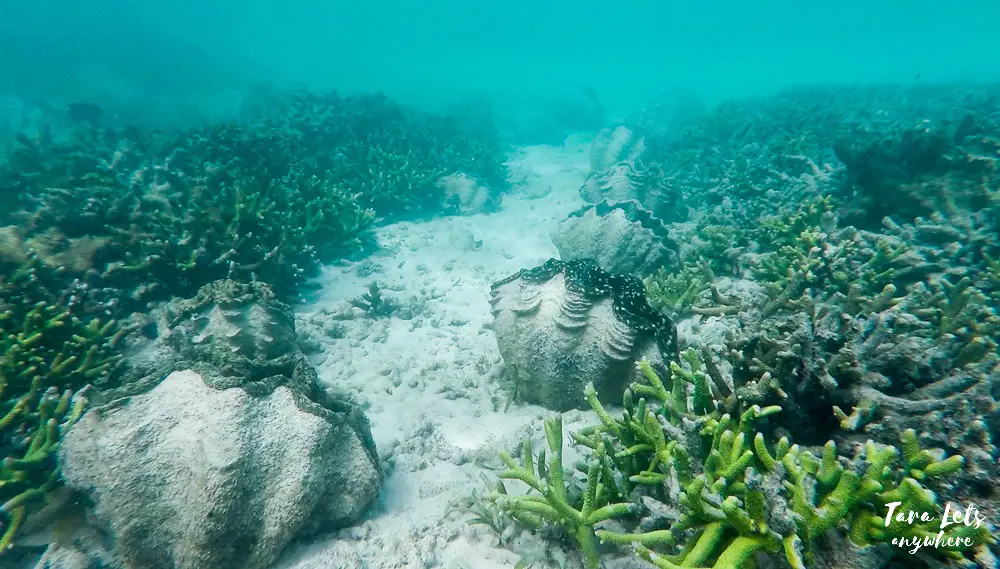
Giant Clam Sanctuary (Camiguin): Incredible Place to See Thousand Giant Clams
The Giant Clam Sanctuary is another must-visit attraction in Camiguin Island.
Before I visited the sanctuary, I didn’t really have high expectations. Giant clams are uncommon, but they can be sighted even in Batangas which is accessible by a 2-hour drive from our place in Manila. Also I don’t read a lot of recommendations about this place, and when someone mentions about it in their itinerary, it’s always in passing.
Let me tell you though — I was surprised and delighted when we visited here during our tour in Camiguin! I recommend stopping by The Giant Clam Sanctuary and spending 2-3 hours exploring its shores.
P.S. Visiting Camiguin soon? Don’t forget to read our Travel Guide to Camiguin Island and Best Things to Do in Camiguin Island.
Contents
Our visit to the Giant Clam Sanctuary
The Giant Clam Sanctuary is located in the small fishing village of Cantaan in Guinsiliban, Camiguin. It was established in 1977 by a non-government organization called Kabila Giant Clam Conservation and Ocean Nursery.
The sanctuary is home to over a thousand giant clams. Seven out of the 9 species of clams worldwide can be found here, including the Tridacna gigas which is the most endangered species. The sanctuary also takes care of clams that can create pearls.
Severe typhoons from 2011 and 2012 have damaged the surrounding coral habitat and diminished the populations of marine life in the sanctuary. Currently the site is still recovering from this.
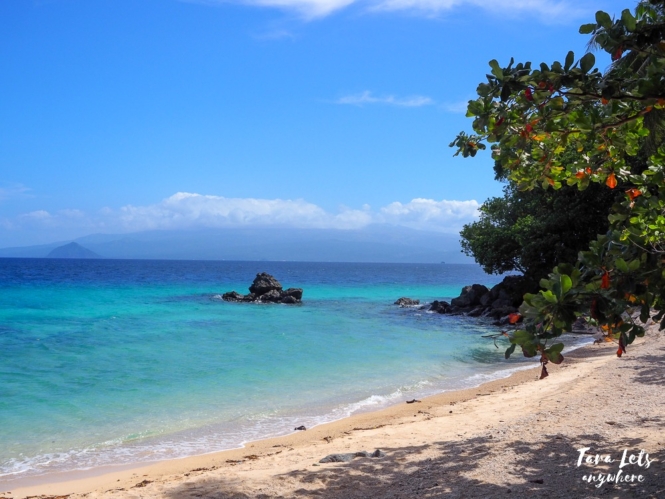
Here is our experience in the Giant Clam Sanctuary in Camiguin.
When we got inside, we headed straight to the registration area. A local guide was assigned to tour us around. We find it interesting that the management seeks the assistance of young children and they have properly rehearsed the tour in English, which is good for non-Filipino visitors.
Our guide showed us the clam laboratory with outdoor aquariums containing young giant clams. They are kept here before being transferred to the man-made sanctuary in the ocean.
Giant clams are also called taklobo in Filipino. The largest species can weigh as much as 200 kg and live at an average of 100 years. Humans are considered the biggest predators of giant clams since they are harvested as food. I further read up on this and learned that the Chinese considers them an aphrodisiac. As such, they are sold in the black market in high prices or blatantly stolen by Chinese fishermen trespassing in the Philippine seas.
Afterwards, we headed to the gear rental station and met up an adult guide who would take us snorkeling in the man-made sanctuary.
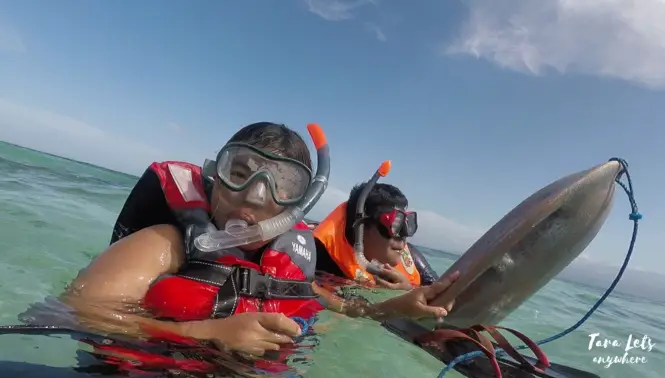
We first stopped in an area with young giant clams, similar to the ones in the clam laboratory. They are arranged neatly in rows. Our guide was careful in telling us the species and attributes of the clams. One of the species therein is the rolling clam, which is the most dangerous species as it camouflages itself underwater and it traps other animals in its thick shells. We were careful not to step on the rolling clams.
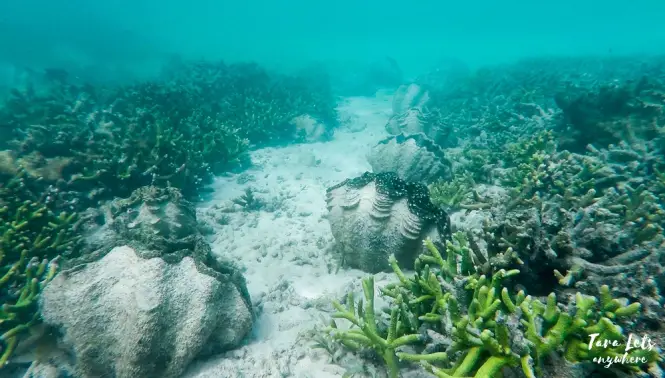
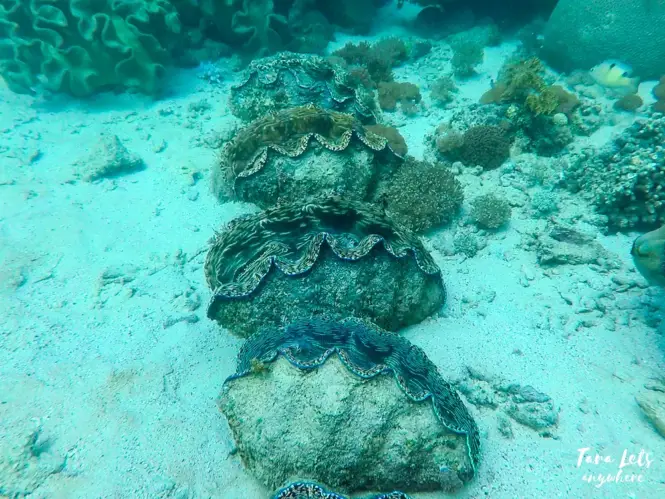
We then went to a deeper part of the ocean where huge giant clams be seen. Honestly, I didn’t know giant clams could be bigger than what I have seen before. Here they were maybe 3x bigger. My friend Joemar and I couldn’t freedive, but our guide was good enough to get our action cameras for us and take close-up photos for us.
Our guide then took us snorkeling to the coral sites. The corals here are monstrous in size. I thought I’d already seen the biggest table coral in Mantigue Island earlier, but the ones here are larger. Our guide again explained that a past typhoon decimated about 90% of the coral population but it was hard to imagine given the seemingly healthy corals we were seeing. He also pointed out specific coral species including a group of corals which had grown into one area called a hospital.
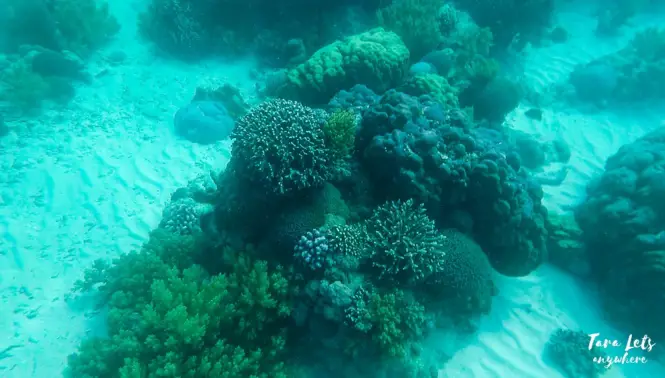
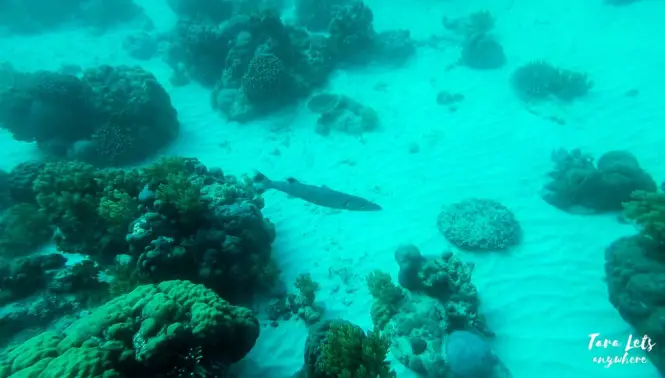
I love snorkeling and was really amazed by our experience here.
Our last stop is another area of giant clams, where the biggest species are kept. Some grow up to 4 feet in length. Our guide freedived and held out his arm to demonstrate the size. Again, he kindly took videos using our action cameras for us.
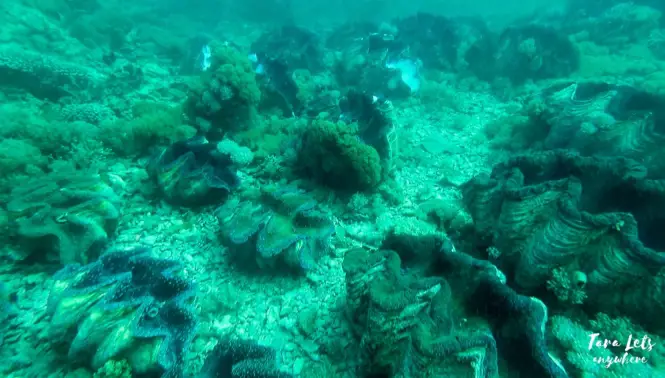
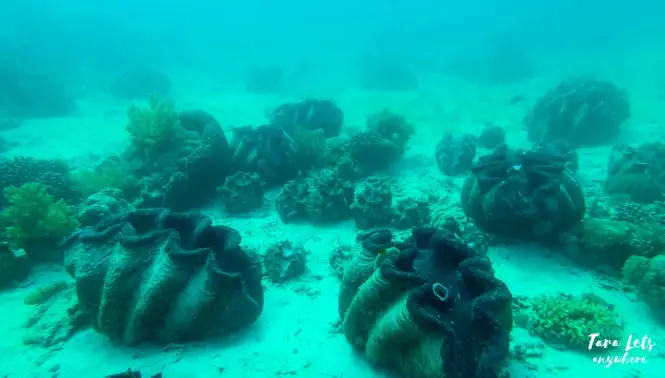
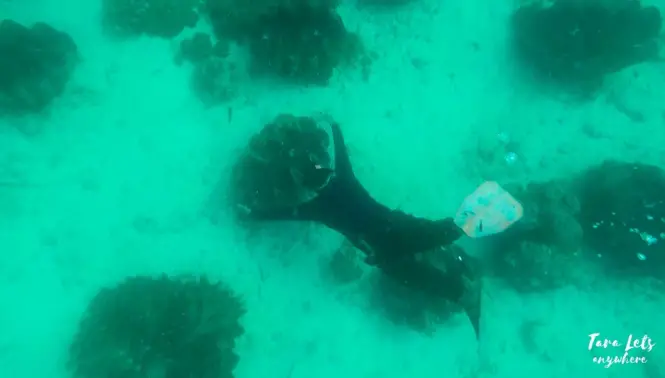
The tour was probably around 45 minutes long. Afterwards, we were left on the beach where we had the option to relax and swim.
Overall, I highly recommend visiting the Giant Clam Sanctuary in Camiguin. It’s not only fun, it’s also educational and it raises awareness on marine life. Moreover, tourist fees in the sanctuary help in the preservation of the sanctuary and the income of the locals supporting the non-government organization.
How to Get to the Giant Clam Sanctuary
The Giant Clam Sanctuary is close to Benoni Port and about 1 hour away from the capital Mambajao.
There are various options to get here:
- Ride a motorela or habal-habal (motorbike).
- You can rent your own motorbike to tour the island including the Giant Clam Sanctuary. Rate is P500 per day.
- For those who have chartered a private vehicle for an island tour, the Giant Clam Sanctuary is usually included in your itinerary.
We visited this as part of our 2-day island tour in Camiguin.
Giant Clam Sanctuary Rates
All proceeds are used for the maintenance and conservation of the sanctuary.
Here are the current rates for the Giant Clam Sanctuary (Updated as of 2023).
| Activities and fees | Entrance fee – P25 Clam viewing fee – P150 |
| Snorkeling gear fees | Mask and snorkel – P100 Googles – P50 Flippers/fins – P100 Lifevest – P50 If you bring your own mask & snorkel, you still need to pay a fee of P50 |
| Others | Table: small – P50 / big – P150 |
Entrance fee includes access to the Kabila Beach and tour at the clam laboratory. A guide is required if you want to snorkel in the sanctuary.
Reminders and Tips
- There is a restaurant in the sanctuary where you can have seafood and other meals by the beach.
- After snorkeling, you can swim and relax in the Kabila Beach, which is a fine white-sand beach. You can also take a glass-bottom boat to explore the snorkeling areas.
- Do not touch or lift up the clams. I see some blog posts where visitors take pictures lifting up the clams, but I think the management has implemented a stricter regulation about this since the No Touch policy is included in their reminders.
- Do not take any souvenirs from the ocean.
- If you’re looking for other snorkeling spots in Camiguin, check out Mantigue Island and the Sunken Cemetery.
Has this Travel Guide to the Giant Clam Sanctuary in the Philippines been helpful to you? Let us know in the comment section below!
What to read next:
Planning a trip to Camiguin? Here are our guides about Camiguin!
- Camiguin: Travel Guide and Itinerary
- Camiguin Tourist Spots + Things to Do
- Mantigue Island
- Giant Clam Sanctuary
- Best Resorts in Camiguin
- Where to Stay in Camiguin: Bintana sa Paraiso
Other related posts:
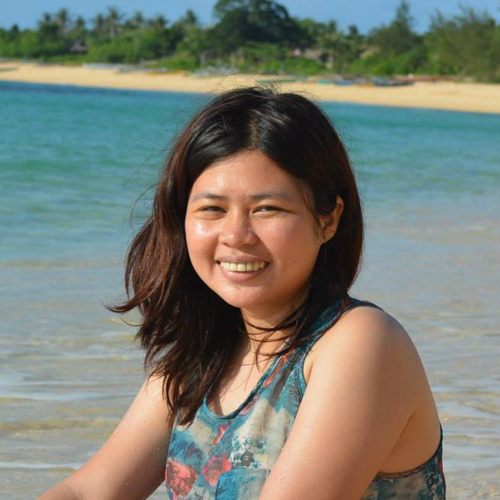
Katherine Cortes is a long-time backpacker and a freelance writer/editor. She likes beaches, snorkeling trips, and relaxing staycations (preferably with bath tubs!).




One Comment
oldbirdtravels
Fabulous!